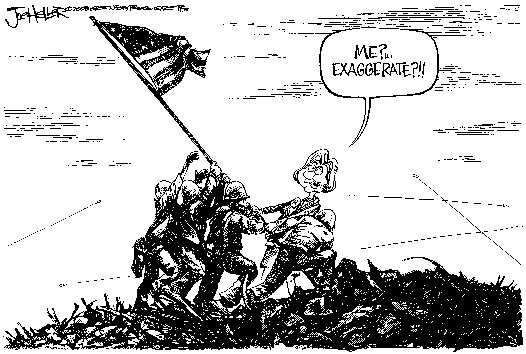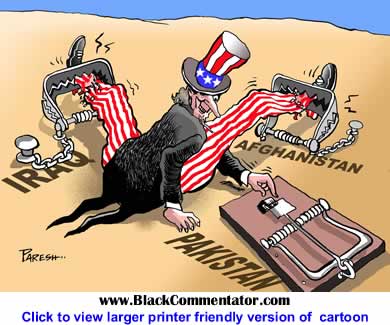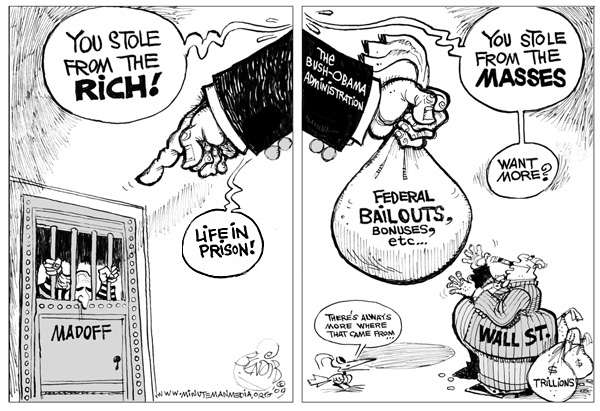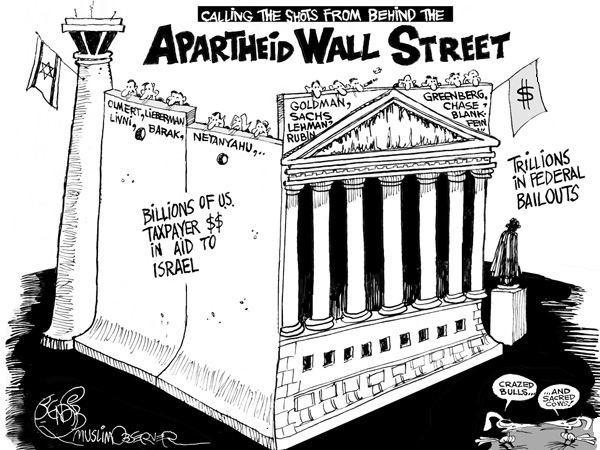The Indian Voter has again shown that he has a mind of his own – an independent mind. In spite of various allegations, which come in very superior sounding tones,
the Indian Voter has displayed a few common patterns.
1. Risk Taking
The Indian Voter has not stepped back from electing new parties and leaders. The 1956 election, saw the Indian Voter challenge Nehru himself. The Left gained nearly 20% of the popular vote – and became the first Communist Government to be elected to power in the State of Kerala. Leaders like Ram Manohar Lohia, JB Kripalani and Jaya Prakash Narayan became legends in their own life time – in many ways, with greater regard and respect than Nehru himself.
These worked outside the ’system’ – and pioneered land reform, proved to be a check on the Nehruvian onslaught on Indian languages (along with the Dravidian parties) and sensitized the indifferent colonial-cadre bureaucrats to be more responsive and caring. To many this looked like Western Socialism (including the practitioners themselves), but it was nation building at a different level.
This election verdict is again a risk – that a victorious Manmohan Singh and hard working Rahul Gandhi may revert to the imperial ways of the old Congress Party. Earlier, the Indian Voter cured this imperiousness by underwriting the rise and use of regional parties. Purpose served, these regional parties have been sent back to the drawing board – to reinvent themselves.
2. Power and hubris
Time and again, the Indian Voter has chastened political leaders – whose hubris and power overwhelmed them. Nehru in 1956, Indira Gandhi in 1977, Rajiv Gandhi in 1989, BJP in 2004 at a national level and many at the state level.
In this election also, the hubris of the regional parties was broken. Sharad Pawar with a few MPs projected himself as Prime Ministerial candidate, as did some other bit players. Film stars like Chiranjeevi thought they could make a power grab by just announcing their candidature. In Maharshtra the Shiv Sena /MNS goons also got their comeuppance. To all these players, went out a clear message, from the Indian Voter.
The national alliance of BJP /NDA did not do too badly! It was the ‘Third + Fourth” Front that has been decimated. Possibly, this election was also about BJP hubris – with LK Advani appearing at every website. Similarly, the use of Varun Gandhi was also in bad taste – if not bad strategy.
3. No sops and no bones
To many, brought up on the Western schools of political understanding, the Indian Voter will vote for cash, sops, caste and allurements. This displays a profound disrespect for the Indian Voter – and greater ignorance.
The Indian State has been gradually and steadily retreating – and the Indian Voter has been at the forefront of this retreat. For all practical purposes health care in India has been privatized over the last 70 years. The vestigial State support for health care can also go, if the State cuts away its exclusive dependence on Western medical systems – and the complete collapse of Indian medical systems. The Western Voter will not let go of the subsidized health care system – while the Indian Voter has been gradually shifting the the private sector.
Similarly, the dependence on subsidized grain has been steadily decreasing. Inflation may give a false impression of increasing food subsidy bills. However, fact is that from about 75% of the population in the 1960-1970 decades, the dependance on subsidized food grains has reduced to 30%-40%.
Similarly, in other sectors too, the reduction of the role of the State is becoming apparent and welcomed – by the Indian Voter. The resistance is from the bureaucracy and the vested interests of Big Business.
In this election, Chandrababu Naidu in AP promised a cash transfer scheme to all families – even middle class families. His welfare statism has been soundly rejected.
4. Hard Work
 Similar to Gandhiji’s Dandi march, which galvanised the nation, NTR Rama Rao’s epochal ‘Chaitanya Ratham’ rewrote politics in India. His 180 day campaign, in 1982, covering an estimated 75,000 km, across Andhra re-wrote Indian politics. For the first time, a political party of a few months, unseated a century old party.
Similar to Gandhiji’s Dandi march, which galvanised the nation, NTR Rama Rao’s epochal ‘Chaitanya Ratham’ rewrote politics in India. His 180 day campaign, in 1982, covering an estimated 75,000 km, across Andhra re-wrote Indian politics. For the first time, a political party of a few months, unseated a century old party.
It provided the inspiration for LK Advani’s ‘rath yatra’ in 1989 – which saw BJP gain a national following. YS Rajasekhara Reddy, the Andhra Chief Minister’s padayatra, which was ignored and ridiculed by the then TDP leader Chandrababu Naidu, (‘as Budabukkalodu, a village jester who wears outlandish clothes and asks for alms during Sankranti festival’) was patterned along similar lines. Covering 1500 km in 60 days, YSR’s padayatra saw Congress re-capture power in Andhra Pradesh after 20 years.
Rahul’ Gandhi’s 2009 campaign was no less. With limited use of helicopter’s and low media coverage, it was a combination of courage and the sheer drudgery that saw Congress come out on top – “winning in 60 constituencies out of the 106 in which Rahul campaigned”.
5. Negative campaigns
The 1969 election came closest to breaking the Congress rule in the pre-1977 India. Significant leaders from the Congress, split from the Congress, and formed the Congress (O). A highly negative campaign saw Indira Gandhi with a stunning victory in the 1971 election.
Her party program was summed up in the simple but highly appealing slogan, “Garibi hatao” (Remove Poverty). The old Congress, led by Desai, responded with the unimaginative, inane campaign slogan, “Indira Hatao ” (Remove Indira). (from The making of India By Ranbir Vohra)
The opposition to Indira – the ‘Grand Alliance’ consisting of the Congress (O), the Jan Sangh, Swatantra and Samyukta socialist parties - all knew that she was the issue in 1971, and they made the mistake of choosing a personalized campaign slogan to reflect this: ‘Indira Hatao’ (Remove Indira). Indira retaliated with the simplistic but effective battle cry of ‘Garibi hatao’. (from Indira By Katherine Frank).
Her speeches had simple logic. “Main kehtin hoon garibi hatao. Voh kehten hain Indira hatao. Ab faisla aap keejiye.”
LK Advani’s anti-Manmohan Singh campaign made the same mistake that Congress (O) made 40 years ago. PM Singh, who is seen as a well meaning, honest, ‘politician’ started looking better – after Advani’s attacks. Rahul Gandhi’s riposte, “have you ever seen a weak Sardar?’ killed this line of campaigning.
The legal processes against Indira Gandhi, by the 1977 Janata Party Government, was again seen as a vindictive and negative campaign, which started off Indira Gandhi’s comeback campaign. Indira Gandhi’s own negative campaign and ouster of NT Rama Rao, by engineering the split in TDP with Nadendla Bhasker Rao, ensured that Congress was out. Varun Gandhi’s abrasive campaign, in contrast to Rahul Gandhi’s inclusive agenda, was albatross around the BJP neck.
The Indian Voter will simply not accept negative campaigning.
Cause for optimism
LK Advani (?) and Manmohan Singh are possibly going to be the last colonial-era Prime Ministers of India. The next generation of political leaders will be Indians who have grown in the post colonial India. This vote is vote for consolidation – for the national parties and for performing administrations.
Colonialism is hearsay, propaganda, exaggerations – a second hand experience, to most young post-colonial Indians. Brought up on a diet of nation building, socialism, (opportunistic) English education, limited exposure to the rest of the world, they have seen rapid change. From an India, which was a ship-to-mouth basket case, to an emerging power, seems to be have been a facile and an easy experience – with little credit being given to Indian political leadership for managing the post-colonial Indian system.
India’s successes have been built on Indian models – and Western models have been singularly unsuccessful. How will India’s young leader’s face up to this challenge? Will they ‘fall into the trap’ of copying successful countries or take the easier path of renewing the Indic model, which may initially, seem difficult.
The continuity will be provided by the Indian Voter, who has seamlessly handed over political power – to tested and untested, to the imperious Indira Gandhi and the humble LB Shastri.
























